KISLEV 5774
CERTIFIED SOUL NUTRITION

WISHING YOU A HAPPY CHANUKAH!

ה"ב !הכונח ןכעליירפ א
הכונח
ד"עשת
By Rabbi Yitzchak Gornish
Dear Reader,
At the end of Hilchos Chanukah, the Rambam brings down an interesting ruling. He says, if a person has only enough money to buy and kindle one candle (either a Chanukah candle or a Shabbos candle), he should forgo the Chanukah candle and use the money to purchase a Shabbos candle to light in his home. When there is light in the home and light at the Shabbos table it promotes shalom bayis and harmony.
By Maayan Meir
Our rabbis give another reason for lighting a candle before Shabbos – when one can see what he eats, it becomes more enjoyable, which increases OnegShabbos and makes for a more satisfying Shabbos meal. Seeing your food, especially its color, plays a big role in the enjoyment of Shabbos and even the taste of the food. Read about the impact of color on our plates in Rabbi Gornish’s fascinating article about food colorants and the role they play in the food industry and the kosher certification process. See for yourself the truth in the saying, “You eat with your eyes!”
In this issue you can also join us as we head up to the kosher world of Alaska where you will see that it’s not just the Chanukah candles spreading light and warmth in Anchorage. The stove in one of the only kosher kitchens there is doing its part as well!
Rabbi Rosenfeld CHASSIDIC
Compiled by Dina Fraenkel
Just as the small amount of pure oil in the menorah of the Bais HaMikdash endured for eight days and nights, many of us need to “burn the midnight oil” and keep going long after we are tired. People turn to energy drinks to help them make it through these marathon days. Read about the dynamic energy drink industry and the challenges faced in certifying these drinks.
Whether you are planning a beautiful Chanukah party, sitting by your menorah, or running around to finish those last items on your “To Do” list, this issue of Kosher Spirit has an article for you.
KOSHER SPIRIT Chanukah 5774
EDITOR-IN-CHIEF:
Rabbi Chaim Fogelman

EDITOR: Dovi Scheiner
ASSOCIATE EDITOR: Dina Fraenkel
DESIGN: Spotlight Design
Wishing you a FreilichenChanukah filled with light, warmth and energy!
Rabbi Chaim Fogelman Editor-in-Chief
We welcome your comments, submissions and letters to the editor. Mail: 391 Troy Avenue, Brooklyn, NY 11213 Email: editor@kosherspirit.com © 2013. No portion of this publication may be reprinted without written consent from the publisher. Scan the QR code with your smartphone to receive a PDF subscription to Kosher Spirit
6 8 11 12 13 17 18
YOUR SPIRIT
THE ~ HEALTHY SPIRIT THE HUMAN EYE
KOSHER IN... ALASKA FOOD COLORANTS
3 4 5
19 20 22 23 SHARE
QUESTIONS FOR
KEEPING
DID YOU KNOW... WE GIVE IT OUR ALL HASHGACHA PROTIS DEPORTED FOR A GOOD REASON KOSHER ENERGY
CHANUKAH RECIPE OLIVE OIL CRINKLE COOKIES NEW COMPANIES 2013 THE GOODS ON GELT 8 THINGS YOU DIDN’T KNOW ABOUT THE DOLLAR
INSIGHTS
PEACE
WHO’S BEHIND THE ~ Interview with
LIGHTS OF
NUTRITION
SOUL
Share Your Spirit
Readers share their thoughts...
Dear Kosher Spirit,
I am a trained herbalist and, as a kosher consumer, I always tried to use herbal products with a reliable hechsher. Much to my surprise, even though I had chosen the appropriate herbs my clients were not getting the ‘refuah’ I expected. After thorough research, I learned that most herbal companies were NOT processing their herbs properly and the herbs were not having the desired effect. Feeling frustrated, I searched for the best and most potent herbal products. Once I found Herbalist & Alchemist I was instantly impressed by the quality and expertise that went into the processing of the herbs. I started using their products and saw that my clients were able to attain their desired healing. (Because I was using the herbs as “medicine” the rabbis I spoke with allowed my clients to use the herbs even without a hechsher since they were vegetarian and nondairy). I am so proud and excited that Herbalist & Alchemist chose kosher certification under the ~, making their products accessible to all kosher consumers.

 Sara Chana Silverstein
Sara Chana Silverstein
Award Winning Wines



Golan Heights Winery recently won a gold medal at the Citadelles du Vin awards in Bordeaux, France for its 2011 Yarden Heights wine.



The winery also won two silver medals; one for the Yarden Cabernet Sauvignon, 2009, and one for the Yarden Syrah, Avital Vineyard, 2008.
www.golanwines.co.il/english
Thats the Spirit!
CLARIFICATION: The Hummus Health Facts listed in the Tishrei 5774 issue were not supplied by Sabra Dipping Company, and do not apply specifically to Sabra brand hummus products. These tidbits describing the general health benefits of hummus were compiled by the Kosher Spirit staff from various on-line sources.
Yummy…all the way to the WICK!
New Yum-Wick edible candles are certified kosher by the ~. Inventor Tara Johnson relates, “I couldn’t have asked for better representation of what we stand for. People trust ~ Kosher and their strict standards will give people the comfort they need to enjoy the only candle that is ‘Yummy… all the way to the WICK!’”

www.yumwick.com

Kosher Archive

Beautifully bound issues of Kosher Spirit at the Machon Chana Women’s Institute School Library.
Kosher Redesign
We are pleased to announce that our new website www.ok.org has officially launched! We have completely redesigned the site with simplicity, ease of use in mind, and a strong focus on kosher information. www.ok.org

www.KosherSpirit.com 3 FEEDBACK
7 5$! * ) 2 $ ## $1 /2! 7 9 7 &, 9 4 !" : ;<= 9 #> 7 ;= 7 7 A ; < ?@@ =: ; < ? @@ : ;< =;=
GOLD SILVER SILVER
www.herbalist-alchemist.com
The ~ receives many letters/emails with kosher questions...

Dear Kosher Spirit, Do cupcake liners need a kosher symbol? How about other common kitchen items, like parchment paper, foil pans, aluminum foil and plastic wrap?
The ~ responds:
Cupcake liners are often treated with substances to ensure the cupcake does not stick to the liner and to prevent the liner from disintegrating. Unless the package states the substance is silicone or vegetable based, it is proper to use cupcake liners with a reliable kosher symbol. The same applies to parchment paper, which also needs a reliable kosher symbol.
Aluminum foil pans may be coated with a substance that is problematic for kashrus Kosher consumers should purchase foil pans with a hechsher OR burn out the pan by inverting it over an open flame for approximately 20 seconds.
Aluminum foil and plastic wrap, however, do not require any kosher supervision for year round use.
4 www.OK.org
Amazing Facts About the Human Eye
There is an obligation to gaze at the Chanukah candles. Just like the miracle of Chanukah, when the tiny flask of oil was more than a simple jar, our eyes have miraculous capabilities.
More than MeetstheEye
An average person blinks 12 times per minute.
It is impossible to sneeze with your eyes open.
The eyeball of a human weighs approximately 28 grams.

The eyes can process 36,000 bits of information every hour.
A human eye blinks about 10,000 times per day.
The eye is composed of more than 2 million working parts.
The human eye sees in 576 megapixels.
The cornea is the only tissue in the human body that does not require blood.
www.KosherSpirit.com 5
8
KEEPING KOSHER IN...
ALASKA
 BY LEIGH HERSHKOVICH
BY LEIGH HERSHKOVICH
We live in a world where kosher food is available almost anywhere we turn. From kosher food aisles in local grocery stores to remote locations where kosher food is imported, almost everything is available. We’ve grown accustomed to food at our fingertips. However, there are still places, even in the United States, where kosher items are limited. A city like Anchorage, Alaska is known more for the amount of salmon it sells than the kosher items they produce. Keeping kosher in Anchorage means learning to be creative, and being grateful for everything you get.
When it comes to local food, necessities are often sparse. The available kosher food consists mainly of a couple of Kosher for Passover items in the local grocery store. Basic kosher food items that most grocery stores carry in larger cities such as Los Angeles and Florida are not carried in Anchorage. Anything from mozzarella cheese to bread to fish
sticks are ordered in bulk from grocery stores in either Seattle or California. A shipment comes in every six to eight weeks and consists of all the basics that are not available around the corner. “There are certain luxuries we’ve learned to live without,” explains Rebbetzin Esty Greenberg, who has been on Chabad shlichus with her husband in Anchorage since 1991.
“There are no bakeries or restaurants. Our house is the restaurant. We’re thankful for whatever we get. If an order comes and it’s not what we wanted, we don’t bat an eye. We’re happy with exactly what we get; if yogurt is plain instead of vanilla, meat is packed in ten pound packages instead of two pounds, if a bottle of wine is smashed – it doesn’t matter. It’s part of the process. We’re thankful for everything we get.” The food is stored in six large freezers in their basement. Everything is prepared fresh at home, which can be challenging, yet rewarding. “Someone once asked my daughter if there are kosher restaurants in Anchorage. My daughter’s answer was, ‘Yes, my house!’”
Rebbetzin Greenberg jokes.
It takes a lot of effort to keep the Jewish community well fed. Besides the monthly food shipments with all of the basics, there are also events, programs and parties to cook for.
Until 2008 when renovations began on their 10,000 square foot Chabad
6 www.OK.org
Center, every event for the community was prepared for in the Greenberg’s home kitchen. “My kitchen with one oven, four burners, one sink, a milchig counter and fleishig counter facilitated all the needs of our community,” Rebbetzin Greenberg explained. “Everything from preschool lunch to Friday night dinners (they host at least fifty people every Friday night), cooking for Yomim Tovim (where they host between 100200 people every year), up to 400 latkes for one Chanukah event. All of this took place in our tiny kitchen.” The Chabad House kitchen, she explains, was like a miracle. “I’ve been working out of that kitchen for a year now and every single day I say Hodu Le Hashem Ki Tov! I walk into the kitchen every time I need to cook and feel the need to hug my massive stove, or the fridge.” This year, making 500 latkes for their annual Chanukah
party in their new kitchen is the miracle of Chanukah.
Keeping and maintaining a kosher lifestyle in Anchorage is only part of the challenge. Last year, Draizy Wilansky, a Chabad Hebrew School teacher in Anchorage, decided to focus on the importance of kosher food with her students. “I taught them all about different brochos and types of food. After each brocha was taught, we would make the food. We made everything from pasta to chicken to cake. At the end of the year, the students made a ‘kosher restaurant’ for the parents and local community members. All of the in-
gredients they needed were ordered in advance. They learned about what it takes to keep kosher and how important it is.
In Alaska, kosher without compromise only applies to the standard of the hechsher. Kosher observant Jews in Alaska often have to compromise on selection and variety, but their commitment to the mitzvah of kashrus is strong and they live up to the challenge. Like the Maccabees and the Chanukah menorah, Alaska’s Jewish community and their mesiras nefesh for kashrus brightens the darkness with the light of Torah and mitzvos.

www.KosherSpirit.com 7
“Someone once asked my daughter if there are kosher restaurants in Anchorage. My daughter’s answer was, ‘Yes, my house!’” Rebbetzin Greenberg jokes...
#
FOOD COLORANTS
THE P OWER OFCOLOR
 By Rabbi YitzchakGornish
By Rabbi YitzchakGornish
The glittering yellow of the Chanukah flames; the deep blue of the ocean; the crisp white of the clouds – each color is innately connected to the object it represents, so much so that shades of color are often named by the object with which they are most associated. Pick up a paint chip card at Home Depot and you will see colors called “Summer Sun”, “Caribbean Blue”, or “Autumn Wheat” and you will immediately make the correct association. Color permeates every aspect of our world. It defines mood in paintings and literature. It can even impact one’s disposition. Red is associated with energy and actually enhances human metabolism, while green, the most restful color for the human eye, promotes healing.
This same principle applies to foods. In fact, colors far outweigh flavors in the impression they make on consumers, especially when color is the prevailing quality that enables the
customer to determine the initial quality of a food. Through learned experience, we are conditioned to associate color with quality and even with a food’s identity. In the grocery store,
consumers are drawn to the brightest and deepest colored fruits and vegetables and make an immediate association between the vibrancy of the colors and the quality of the produce. Sometimes foods have their color enhanced to meet our expectations; for example, some ripe oranges are a mottled green but the skin is dyed orange to be more appealing. As our society has become more health conscious, food colorings have taken on new importance as health concerns regarding colorants abound.
Studies have demonstrated that color is often the deciding attribute when determining food perception. Taste panels have often misidentified soft drinks, yogurts and sherbets
8 www.OK.org
when the colors and flavors were intentionally mismatched. The majority of the testers also rated the quality of the product as “poor quality” when the color was changed. Many consumers recall a famous cola company’s short lived attempt to market “Crystal” cola in the 1990s. While the company assumed consumers would seek out soft drinks without caramel coloring because it would be perceived as healthier, the marketing experiment failed because our preconception was that cola drinks must be brown despite the identical taste.
Despite the high-tech methodology used to color foods, it is not a modern invention at all. Even the Talmud describes instances of coloring mustard with egg yolks.1 Unscrupulous food manufactures marketing poor quality and spoiled foods by artificially altering the color. Pickles were dyed green with toxic copper sulfate, candy with lead salts, and watered down milk was dyed yellow, all to mislead the consumer. Some of our earliest food laws were designed to protect the public from improperly colored food, including the federal Pure Food and Drug Act of 1906, which regulated dyes in food.
THE PHYSICS OF COLORS
Understanding food colorants requires a brief explanation on the physics of colors. Light is the area on the electromagnetic energy spectrum that corresponds with the section between 400 nanometers and 700 nanometers. Color is the light reflected back from a compound to the eye. When an object appears white, the entire light is reflected off the object, whereas when it appears black, all the light is absorbed and the eye perceives a lack of light. (This is why black cars are hotter when sitting in the sun.) However, many compounds absorb parts of the light spectrum and
jugation, more energy is needed to “excite” the electrons.
This amount of energy affects the actual color because there is a range of energy levels in the various colors of the color spectrum. In the rainbow of colors, red has the least amount of energy, while violet has the highest level. The colors in between (orange, yellow, green, blue and indigo) gradually increase in energy. A compound with more conjugation would reflect the red-orange energy portion of light and absorb higher energy blue-green, therefore appearing somewhere in the range of green to violet. A less conjugated compound would absorb the red-orange and reflect blue-green, therefore appearing somewhere in the range of red to yellow.

An example of these concepts would be carotenoids, highly conjugated compounds found in carrots, tomatoes and certain algae, responsible for the redorange colors of these items. In nature these carotenoids are consumed by wild salmon and certain song birds which create the red tint in their appearances. (Farmed salmon need to be fed this carotenoid in order to resemble their wild relatives.) On the other hand, retinol (vitamin A) has less conjugation and appears as yellow because it absorbs more of the blueviolet portion of the spectrum.
reflect other areas and are perceived as colors by the color receptors in the retina.
And now for some “tech talk”… The atomic structure of a given compound is what determines the light reflection and absorption, creating the perceived color. A trait that plays a large role in a compound’s color is the level of conjugation (consecutive multiple bonds). A double bond, which is made up of delocalized electrons, requires less energy to shift electrons to an “excited” state. When a compound has less con-
TYPES OF COLORANTS
It is very important to understand a given colorant both on the micro and macro levels. Ideal colorants are pure and non-toxic, are soluble and/or dispersible, don’t contribute to the taste/fragrance of the food, are stable in heat/freeze situations, do not react with other compounds in the food,
www.KosherSpirit.com 9
Color is often the deciding attribute when determining food perception...
#
have uniform characteristics, are widely available and economically feasible, and conform to the government regulations of most countries.
There are three classic types of colorants: natural, nature identical, and synthetic, with each class having benefits and drawbacks. Natural pigments are those extracted from animals, plants or minerals. Common examples are carotenoids, anthocyanins (for instance, grape skins) and chlorophylls. Natural colors are more regulated than natural flavors. In order to be a “natural color” the added coloring has to actually be native to the item. If the pigment is not naturally found in the particular food (example beet juice in strawberry ice cream) the product label cannot state “natural color added”. Drawbacks for the manufacturer include greater variability, insufficient supply, and higher expense.
Nature identical pigments are artificially produced replicas of natural pigments. They are more regulated and less costly but are still subject to the drawbacks of variability and insufficient supply.
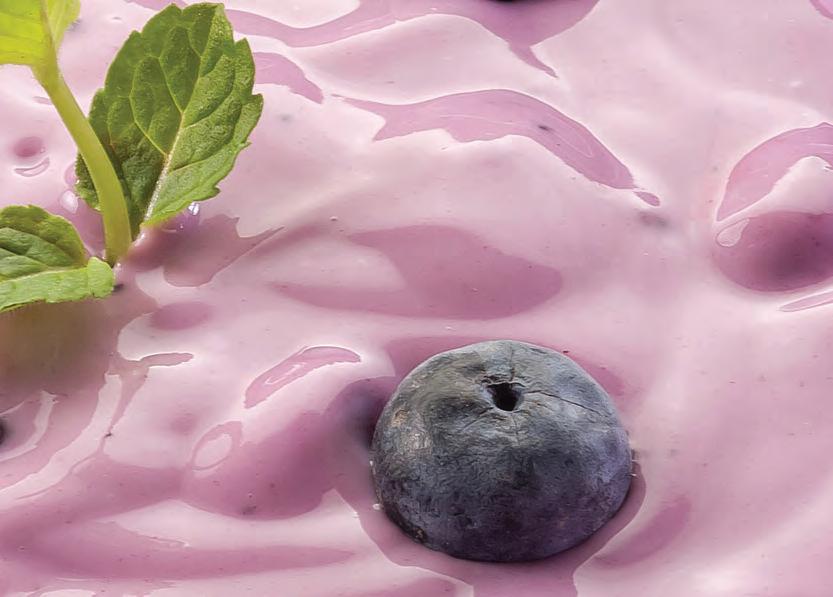

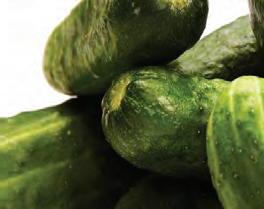
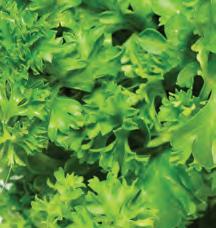

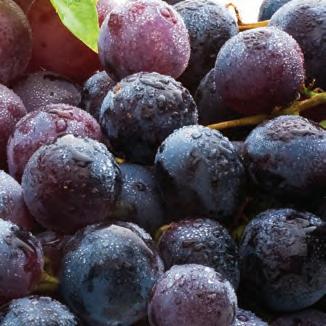
Lastly, there are two types of synthetic colorants: FD&C dyes and FD&C lakes. Dyes are water soluble and lakes are oil soluble. These colorants are heavily regulated and are generally only provisionally approved (the government can revoke the approval at any time). In addition, different countries ban various synthetic dyes which can complicate foods destined for export. For instance, Red #40 is allowed in the US and Canada but not in the European Union and Switzerland. Many of the synthetic dyes have been subjected to controversial toxicity studies and conflicting results have been claimed. The benefits for manufacturers, however, are great – synthetic colorants are cheap, stable and reliable.

KASHRUS IMPLICATIONS
Natural colorants are sometimes manufactured on non-kosher equipment, such as spray dryers. While most synthetic food colorants do not require a hechsher, FD&C lakes can be problematic. Lakes often utilize dispersion agents which can include oils, glycerin and corn based syrups (which are not approved for Passover). Natural colors are, for the most part, kosher, assuming that the facility does not produce non-kosher colors on the same equipment.


The famous exception to this rule is cochineal, a red pigment extracted from female insects of the coccoides and aphimiden families. It takes 80,000 to 100,000 insects to produce one kilogram of this pigment. The purified version of this dye is called carmine or carmine acid lake. It was highly coveted as a dye in the 16-19th centuries, but its appeal has fallen sharply due to high cost and availability of synthetic colorants. However, carmine is still added to some meat products and maraschino cherries. There is a dispute amongst halachic authorities regarding carmine.2 If a

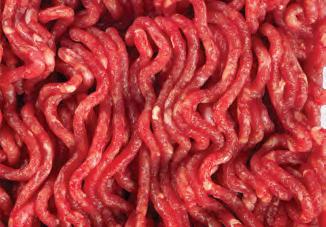

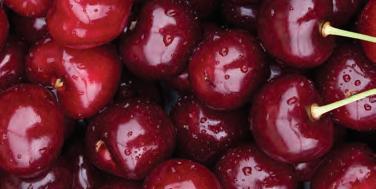







color adds no additional taste is it problematic as a kashrus concern? As there are opinions on both sides of this issue, the ~ follows the approach that when the forbidden color source is biblically prohibited, it is not allowed. However, when the prohibition is rabbinically sourced it would not be forbidden. Carmine is forbidden biblically as an insect derived colorant3 and is therefore not used in ~ certified products.
There is another related principle that if a non-kosher food is no longer edible even for a canine (turned into dust), it loses its forbidden status.4 Carmine fits this description and, therefore, some authorities permit its use. Those who forbid carmine in kosher products do not state it is forbidden outright. They remain concerned that the carmine might not have been properly dried to render it “turned into dust”. As there are other alternatives available, most kashrus agencies advise utilizing alternatives instead and the mainstream kosher supervisions do not allow certified products to contain carmine. In fact, prohibiting the use of carmine is the unofficial litmus test to regard a hechsher as “mainstream.”

10 www.OK.org
There is an interesting halachic debate about the kosher status of dyes used in the service of the Beis HaMikdash. Only materials that are derived from kosher items may be used to perform mitzvos (for example parchment must come from a kosher species that was shechted).5 As such, the outfit of the Kohen Gadol and the red heifer sacrifice contained a dye translated as “worm red”.6 Some authorities claim it did not consist of actual worm but either resembled a worm or was derived from hard objects found in the worm’s intestine.7 Others claim it was the actual dried out worm which lost its forbidden status because it was no longer fit for canine consumption and was considered “dust”.8 This qualification is derived from the aforementioned dispute regarding carmine.


Like the Maccabees who merited to reclaim and rededicate the Beis HaMikdash, may we merit the Final Redemption and the Beis HaMikdash HaShlishi where we can experience the vibrant colors of the Temple service and once again make the red dye for the clothes of the Kohen Gadol.
DID YOU KNOW...
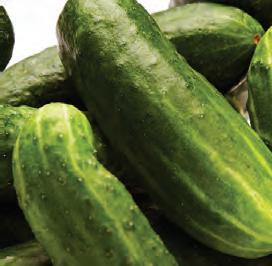
We Give It Our All
20 million shipping containers travel across the ocean at any given time.

Did you know that only 5% of containers shipped into the US are inspected? The ~ has a detailed ISO Tank system to monitor 100% of our kosher certified bulk shipments.
1. Gemara, Shabbos 139b.
2. Pri Chodosh, DarkeiTeshuva 102:5; MinchasYitzchak,Chelek Gimmel, 96:2; Rav Ovadia
this principle all mitzvos are patterned after tefillin. However, the Shu”t BeitShlomo (Orach Chaim 108-109) permits candles made of non-kosher fats for Chanukah and Shabbos
www.KosherSpirit.com 11
Yosef, YabiaOmer 8:11.
3. Vayikra 11:20-23.
4. Minchas Yitzchak, Chelek Gimmel, 96:2 (Noda B’Yehuda Siman 25).
5. Gemara, Shabbos 28b; Shulchan Oruch, Orach Chaim 32:12. The Magen Avraham (586:3) states that in
6. Shemos 25:4.
7. Rambam, Hilchos Para Adumah, Perek Gimmel, Halacha Beis
8. Me’am Lo’ez, Parshas Terumah 25:4.
If a color adds no additional taste is it problematic as a kashrus concern?
#
BY MAAYAN MEIR
השגחה DEPORTED FOR A GOOD REASON
The international trips that ~ mashgichim make are always planned meticulously. Visa arrangements, necessary documents, transportation and accommodations — all are taken care of by the ~ office in order to make sure the rabbis can do their work properly. However, sometimes unexpected things happen…for reasons that have nothing to do with faulty planning.
Recently, Rabbi Shmuel Eidelman of ~ Israel flew to Moldova in order to train our local mashgiach in checking cherries for bugs. Those cherries were to be harvested and packaged for an Israeli distributer.
At the time, Moldova had a special “VIP visa on arrival” routinely awarded to people coming on business trips.

Rabbi Eidelman’s trip fell under this category so the expectation was that, as always, he would get the visa upon arrival.

Usually, airports do not let people board planes to destinations that require a visa unless they see proof the passenger will be able to enter the country. However, in this case everybody knew about the visa on arrival procedure and Rabbi Eidelman was allowed to board the plane without any problems. Unfortunately, as he was getting on the plane, the regulations in Moldova were being changed and the visa-on-arrival was no longer permitted.
When Rabbi Eidelman landed in Moldova with no visa in his passport, the airport authorities showed no mercy. They informed him he was being deported back to Israel via Turkey.
In Turkey, Rabbi Eidelman was led unceremoniously to a big room where deportees of all kinds were detained until they boarded the planes taking them out of the country.
There, among illegal immigrants and people suspected of terrorism, Rabbi Eidelman had to spend the night. Fortunately, he was allowed to call the Israeli embassy and inform them of his plight.
In the morning, Rabbi Eidelman went to a corner in order to put on his tefillin. He tried to do it unobtrusively, but one woman noticed him and started gushing in a language he didn’t understand. Then, she called her husband to come over and pointed to Rabbi Eidelman’s tefillin.
In broken English, the man explained to Rabbi Eidelman that he was a Jew from an Arabic country and was being deported back to his country of origin. He vaguely knew that tefillin were a “Jewish thing”.
With the help of a lot of sign language, Rabbi Eidelman managed to ascertain that the man was really Jewish – he knew for a fact that his mother was a Jew. Once that was clear, Rabbi Edelman helped him put on his tefillin. The man was enthusiastic and excited, talking quickly in his foreign language.
A short while later Rabbi Eidelman boarded a plane to Israel. At the airport he found the ambassador of Moldova waiting for him ready to award him a visa. In about an hour, Rabbi Edelman was on a plane to Moldova again – the cherries were waiting.
The unusual journey to the supervision site was exhausting and time consuming, but Rabbi Eidelman did not regret it. After all, due to the surprise change in the visa rules an isolated Jew put on tefillin for the first time in his life!
12 www.OK.org
תיטר
פ
BY MAAYAN MEIR
Truck drivers, late night study sessions and busy people working two jobs all have something in common – they need a way to stay alert and get extra energy. Once the beverage of choice for athletes and night shift workers, energy drinks have increased in popularity over the last two decades and are now considered a mainstream product. In an age where everybody is rushing, multitasking, and rarely has time for themselves, this subset of the soft drink industry emerged triumphant. Energy drinks are experiencing rapid growth and increasing in popularity and are currently thought to be the next high-growth sector of the soft drink industry as more and more companies take advantage of this lucrative market.

www.KosherSpirit.com 13
What does a typical energy drink contain? Most are non-alcoholic and rely on a combination of caffeine, sugar and taurine – an amino acid – in order to achieve the desired effect. They were first consumed by American athletes who felt the need for a drink that would give them an extra bit of energy



than happy to cater to the new demand.
Kosher energy drinks came later, after the product took off in the general market. “We’ve worked with the biggest beverage companies in the world,” says Rabbi Aharon Haskel, head of ~ Israel, “and mostly they believed that investing in the production of kosher-certified energy drinks wasn’t worth it. They thought energy drinks were a passing fad.”
What made experienced managers hesitant to bring on kosher supervision? For one thing, a close look at the label of an energy drink can cause real alarm: you will find warnings that pregnant women and children, diabetics and caffeine-sensitive people should not consume energy drinks. There is also a statement – required by law in most western countries – that the drink contains a lot of caffeine. Energy drinks have some controversial health concerns, so companies thought their appeal would not last. If energy drinks weren’t there to stay, why invest in a kosher version?
The ~ was first approached to certify an energy drink seven years ago, when the Israeli company Shamshum (owned by a Christian-Arab family from Nazareth) applied to have the XL energy drinks kosher certified. At the time, Red Bull was the only energy drink sold in Israel and it was considered a premium product. Shamshum thought they could reach a much wider audience with a product that, while being a bona-fide energy drink, would be cheaper and more readily available. After researching the energy drink market, Shamshum
chose the European brand XL, a little-known brand which would be possible to import into Israel for a reasonable cost.
The kosher requirements were not easy for XL. Energy drinks must have a reliable hechsher. XL did not have their own filling facilities and instead outsourced the fillings to

ing days became limited. Since most filling facilities fill grape juice drinks as well, the ~ had to ensure that all filling would stop for 24 hours before the kosherizing process for XL filling could take place. That means that kosher productions could take place only on Monday mornings since the factories are closed on Sundays.
There was also a problem with some of the ingredients. Energy drinks are produced by using compound (pre-mix) which, at that time, was produced by only two manufacturers in the world. These compounds contained a great number of ingredients, and the ~ had to receive the full list of the ingredients and suppliers and visit each plant in order to make sure the compound could receive kosher approval. “It was by no means easy,” says Rabbi Yaakov Perlov, who was then the company rabbi of Shamshum. “We needed the cooperation of many companies and kosher agencies, and we literally travelled all over the world to get the information we needed, but finally the
14 www.OK.org
process was completed and the compound was approved.” Getting a kosher for Passover compound, however, was not successful. Following Shamshum’s request, the ~ made an attempt to help produce a special compound which could be approved for Passover. Unfortunately, the result was only mediocre and the attempt wasn’t repeated.
nated. XL decided to partner with a different Israeli distributer, so Shamshum developed their own brand, ‘Blu’, which was produced and filled in Poland. Once again, the ~ was there to approve the formula and the production process. Soon, the Israeli market had the benefit of two ~-certified energy drinks: XL and Blu. Today, those brands control 90 per-
Krakow, Poland, who often supervises productions for Blu and XL, says: “The plant personnel usually enjoy learning about kosher issues. They equate kosher certification with high quality and they are proud of producing kosher products.”

Of course, from time to time, the mashgiach needs originality and resourcefulness to resolve issues that
especially once the drink was introduced to the Israeli market and proved to be a success, and flying a rabbi over from Israel for every production would have been prohibitively expensive. Luckily, the ~ has field representative all over the world and after the first productions, local mashgichim supervised the fillings which took place in 3 plants – two in Holland and one in Poland.
After a few years, the agreement between Shamshum and XL was termi-

tact the ~, trusting our experience in this industry.


The local mashgichim still attend every production of both XL and Blu drinks. “To make the work easier,” says Rabbi Perlov, “we reached an agreement with both companies that only ingredients we approve can enter the filling plants which are used for the kosher products.”
How does the non-Jewish staff view the kosher requirements? Rabbi Eliezer Gurary, the Chabad Shaliach in
the silo tanks. The halacha calls for filling the tanks with boiling water and then with cold water. He said that producing right after filling the tanks with cold water was unhygienic. So, after a discussion, I offered to fill the tanks with boiling water again after the kosherizing and start producing only after that additional step. He agreed and that was what we did.”
When the ~ started certifying energy drinks, only a few containers were produced every year and sold in
www.KosherSpirit.com 15
XL did not have their own filling facilities and instead outsourced the fillings to a variety of facilities by contacting a filling plant and reserving a date for the XL fillings...
Israel alone. Today about 1,000 containers of ~-certified energy drinks are produced every year and marketed in America and Europe as well.
“It’s ongoing work,” says Rabbi Haskel, Director of ~ Israel. “Today the trend is to produce energy drinks in many different flavors – a flavor for every season, for every culture…We are constantly asked to approve new flavors – and new colors. There are
also drinks produced with artificial sweeteners and we have to ensure only approved sweeteners are used.”
One of the greatest challenges for the ~ was to find a kosher alternative for E163, a color one of the clients wanted to use – a deep crimson color which is produced from grape skins. The ~ arranged for the color to be produced from grapes that were supervised from the crushing stage. The
company which undertook this task was, providentially, also an ~ certified company.



“You can never rest on your laurels with energy drinks,” says Rabbi Perlov. “This is not a static product, but an ever-changing one. You need a lot of energy in order to produce kosher energy drinks… Thankfully, at the ~ we have that kind of energy!”

is There Such a Thing as Healthy Energy Drink?
Typical energy drinks are far from being healthy, since they are packed with caffeine, sugar and taurine. However, it is possible to find healthier substitutes – thought they are, of course, considerably more costly.
The ~ recently certified one such substitute, produced by Gat Foods, the biggest beverage company in Israel, which markets three brands: Carlsberg beer, Tuborg beer, and Prigat soft drinks. Gat Foods is a long-standing client of the ~ and once the soft drinks division decided to launch their healthy energy drink, the ~ was consulted for certification.
This new energy drink, called Cranergy, is based on
cranberry concentrate and grape concentrate. It also contains guarana, coffee extract and tea extract. The caffeine content in the drink is much lower than standard energy drinks and the drink is sweetened with stevia instead of sugar.
Since there are so many natural ingredients in the Cranergy drink, certification was a truly global project. The grape concentrate was produced under strict
supervision in Argentina, the cranberry concentrate came from the US, and the coffee and tea extracts were purchased from Germany. No fewer than 10 mashgichim were involved in ensuring that this new, highquality product is kosher without compromise!
16 www.OK.org
Note: Cranergy is only certified kosher when produced in Israel and bearing the ~ symbol.
Chanukah Greek Olive Oil Crinkle Cookies

2 cups flour
1 cup Dutch process cocoa powder
2 tsp baking powder

1/2 tsp salt
2/3 cup olive oil
2 cups sugar
2 eggs
2 tsp vanilla
2 tsp coffee dissolved in 1/4 cup water
Wilton gold color mist food spray

YIELDS: 3 dozen cookies

Preheat oven to 350˚. In a bowl, whisk the flour, cocoa, baking powder, and salt. In a separate bowl, combine the olive oil, sugar, eggs, vanilla, and coffee. Add the dry ingredients to the wet ingredients and stir well to combine. If any lumps remain, stir the mixture with a hand-mixer until all the ingredients are well incorporated. Place the dough in the refrigerator for a few hours or overnight.
Roll 1 heaping tablespoon of batter into a ball and place on a parchment-lined baking sheet. Make sure to roll the batter quickly (otherwise the heat of your hands will make it sticky). Repeat with remaining batter.
Spray the cookies with gold spray paint and bake at 350 degrees for approximately 12 minutes. Set aside to cool.
While the cookies are still a little warm (but not too hot that they will melt the chocolate), press chocolate coins into the center of each cookie.
VARIATION: Spray the cookies with silver color mist and top with milk chocolate coins. If you prefer not to use color mist, you can roll the cookies in turbinado or powdered sugar instead.
www.KosherSpirit.com 17
Submitted by Chanie Apfelbaum. To see more of Chanie's original recipes and crafts for the holidays and every day visit www.busyinbrooklyn.com
CHANUKAH RECIPE
Chanukahgelt is traditionally distributed to children on each night of Chanukah because the root of the word “Chanukah” is the same as the root of the word “chinuch”. After the Greeks were vanquished, we had to reeducate the Jews about Torah values; therefore, we give Chanukahgelt as a reward for Torah study. In addition, the Greeks did not destroy the Beis HaMikdash and the oil, they defiled it and used it for un-G-dly purposes. Therefore, we give Chanukahgelt to celebrate our freedom to use our material wealth for spiritual purposes.
One of three things that Hashem instilled in the world is that people would accept currency. Rashi says: “If not for this, the world would not be able to exist.” Gemara, Pesachim 54b.



In 1775 the Continental Congress printed the new nation’s first paper money, known as “continentals,” to finance the American Revolution.
American “paper” currency is made of ¼ linen and ¾ cotton.




















A bill rips in half after being folded 4,000 times.
The largest denomination Federal Reserve note ever issued for public circulation was the $10,000 note. It was taken out of circulation on July 14, 1969 along with $500, $1,000 and $5,000 bills.
The average lifespan of a $1 bill is 21 months, while a $100 bill lasts for 7.5 years.
$1 and $2 notes cost 5.5 cents each to make, $5,$10 and $100 notes cost 9.9 cents, and $20 and $50 notes cost 10.9 cents.
The Bureau of Engraving and Printing produces 26 million notes a day, with a face value of about $907 million.

The Secret Service was created in 1865
to fight counterfeiting in the wake of the Civil War, when it was estimated that a full one-third to one-half of the currency in circulation was counterfeit.
Source: federalreserveeducation.org
www.KosherSpirit.com 19
MEET OUR STAFF:
BEHIND
WHO’S BEHIND THE ~
Interview with Rabbi Yitzchok Rosenfeld

KS: Where did you grow up? Where did you go to yeshiva?
RYR: I was born in Israel, but as a child, my parents moved to New York since my father wanted to learn in the Mechon Hora’a Kollel in Monsey. I initially went to a local mesivta, but my maternal grandfather, the gabbai of the Belzer Rebbe, did not let me stay there very long. When he arrived in New York for the bar mitzvah of one of my brothers, he declared that a bochur should learn far away from home and he took me back to Eretz Yisrael where I enrolled in the Belzer yeshiva. I learned there until my marriage and really felt those years were immensely important for my progress.
KS: What did you do after yeshiva?
RYR: After four years in the Belzer yeshiva I got engaged to my wife, Sara. After my wedding I learned in kollel for three years where I got to know Rabbi Perlov, with whom I now have the pleasure of working with at the ~.
KS: What is your current position at the ~?

RYR: I currently supervise the mashgichim for all Israeli facilities and wineries and I am the team leader of Cholov Yisroel productions abroad.
KS: What prepared you the most for your current position at the ~?
RYR: I started my kosher work literally from the bottom and that’s how I learned my work so thoroughly. My first job was in the wine industry and so I learned a lot about the process and the different stages of wine making. I found my work very interesting, so I made sure to inter-
nalize everything I saw and heard. Today, wine professionals who want to keep their reputation intact and are too embarrassed to raise questions to their colleagues come to me in confidence to ask for advice. They feel comfortable consulting with me.
For example, I had a desperate winemaker come to me with a serious problem: due to some negligence, his wine started smelling like vinegar. I helped him obtain copper powder that solved the problem without everybody knowing for whom this powder was purchased. In another case a winery was getting its red wine bottles recalled because of crystals forming within the bottles. I went to the winery and checked their equipment, and found out that they had a problem with one of the devices. They fixed the issue and the problem went away.
In addition to the practical knowledge I have B”H accumulated, I also took private lessons with many professionals in the field as well as with leading scholars. That is how I came to thoroughly understand the chemical processes involved in wine making.
KS: What is best thing about working at the ~?
RYR: The ~ really excels in organization. The rules are clear-cut with no gray areas. Everything is done in an orderly way – from work assignments to payment. Efficiency is paramount: you don’t have to spend a half hour finding out if an ingredient is kosher or not, the ~’s proprietary computer program enables you to perform the search in a moment or two.

When you arrive to inspect a facility, you have a tidy file with all the paperwork you need to help you do your job.

~
20 www.OK.org
Rabbi Yitzchok Rosenfeld
When you leave, you have exactly the necessary materials to leave with the client to help him understand what kosher means and how the ~ works.
I think Rabbi Don Yoel Levy deserves a lot of credit for building such an empire that functions seamlessly and precisely despite its large size. In Israel, much credit goes to Rabbi Haskel, who ensures we work in a thoroughly professional way even when we are dealing with clients who are used to the typical Israeli balagan.
KS: How would you describe the ~ today?

RYR: As I said, I think the ~ became a byword for good organization and professionalism. I meet mashgichim from other agencies all the time, and they all say they wish every kosher organization was like the ~ – concerned solely with kosher matters and totally apolitical.
KS: Can you share an interesting experience that you had while working at the ~?
RYR: Last winter I spent some time supervising a chocolate production in Serbia. On my way back to Israel I took a Turkish Airlines flight with a stop in Istanbul.
When the plane landed in Istanbul I was in the middle of daveningShacharis so I was wearing my long coat, my hat and my gartel, as is the custom of chassidim. Then, we heard an announcement asking the passengers not to leave their seats just yet since the clergymen on the flight should be the first to leave the plane. Of course I obeyed and didn’t stir.
A few minutes later, a man wearing Turkish Airlines uniform approached me and asked me to come with him. I was worried, not knowing what he wanted, but of course I went with him. We got off, and he led me to a VIP car. I was given the royal treatment in the airport, simply because the Turkish made a mistake and thought I was the important clergyman on the flight! (Perhaps they could see my G-dly soul…) On an El Al flight that definitely wouldn’t have happened!
“ What Other People Say About Rabbi Yitzchok Rosenfeld
“
“W
orking with Rabbi Rosenfeld is a true pleasure, since he is a real Ben Torah, both in his scholarship and halachic knowledge and in his behavior and manners.
When Rabbi Rosenfeld undertakes a task you know it will be done in the best possible way and he will not rest until the necessary results are achieved. His vast experience in supervising the production process in a variety of facilities shows in everything he does.”
Rabbi Binyamin Neufeld
Rabbinic Coordinator, ~ Israel
“T
here are three words that define Rabbi Rosenfeld: professionalism, service and dedication. It’s customary to hear from companies abroad that they are amazed at his expertise and knowledge. Once, a food engineer of a Hungarian company told me that Rabbi Rosenfeld knows their dairy better than they do. When it comes to Israeli wineries, everybody knows he is the go-to man for every professional question, and winemakers constantly consult him whenever they are in doubt!”
Rabbi Yaacov Perlov
Rabbinic Coordinator, ~ Israel


“Once, a food engineer of a Hungarian company told me that Rabbi Rosenfeld knows their dairy better than they do....”
– Rabbi Yaacov Perlov
www.KosherSpirit.com 21
Rabbinic Coordinator, ~ Israel
hanukah is universally known as the Festival of Lights, with the light of the menorah increasing on each successive night of Chanukah. In his discussion of the laws of Chanukah, the Rambam makes an important ruling: “If [a person has the means to perform only one of two mitzvos,] lighting a lamp for one’s home [i.e., the Shabbos candles] or a Chanukah lamp, the lamp for one’s home is granted priority, since it generates peace within the home…”1
Why does the Rambam explain the importance of peace when discussing the laws of Chanukah? Why not in the section dealing with the laws of Shabbos, the day of peace? The mention of Kiddush versus the Shabbos candles does not even pertain to the laws of Chanukah!
These questions can be answered by explaining the difference between the menorah in the BeisHaMikdash and the Chanukahmenorah. The menorah in the BeisHaMikdash was kindled inside the sanctuary, while the Chanukahmenorah is lit at the outside of the entrance to one’s home2. In addition the menorah in the Beis HaMikdash was lit during the day, while the Chanukahmenorah is lit after sunset and burns into the night.
The menorah in the BeisHaMikdash was lit in a place where holiness was readily apparent, inside the Beis HaMikdash itself. In the BeisHaMikdash G-dliness was revealed openly, while in the material world G-dliness is concealed. Therefore, when the Greeks defiled the BeisHaMikdash all of the korbonos and related services, particularly the lighting of the
menorah, were nullified. The kedushah was overshadowed by the tumah.
The Chanukahmenorah serves a different aim. The Chanukah lights brighten our physical environment and light up the night (Golus). The Chanukah lights can overpower the forces of evil, as our Sages say: “The candles should burn until the feet of the Tarmudites depart from the marketplace.”3 (“Tarmud” shares the root of the word “moredes” [rebellious one] and refers to the forces of evil.4)
Based on this special force inherent in the Chanukah lights, they have an aspect of holiness that can even surpass the lights of the menorah in the Beis HaMikdash. The lights of the menorah in the BeisHaMikdash were negated by the hedonism and influence of the Greeks, while the Chanukah lights can never be nullified.5 They brighten the darkness even in Golus, the time of the greatest possible darkness.
The contrast of the menorah in the BeisHaMikdash and the Chanukah menorah parallels the contrast between the ba’alteshuvah and the tzaddik. 6 The tzaddik, like the lights of the menorah in the Beis HaMikdash, has no connection to aveiros. The ba’alteshuvah, however, has committed aveiros in his past, but has done teshuvah and transformed his personal darkness into light, turning evil into good.7
This contrast is also revealed through the number of lights kindled in the two menorahs. On Chanukah, eight lights are kindled, when in the Beis HaMikdash only seven were kindled. Seven, the num-
ber of lights in the BeisHaMikdash, signifies perfection within the natural order, like the seven days of the week. The perfection of the number seven applies in the material world and in the Seder HaHishtalshelus (the progression of spiritual realms). Therefore, in the BeisHaMikdash, where G-dliness was readily apparent, seven lights were enough.
When we need to bring peace and light into the darkness of Golus, it is necessary to add an extra light, to transcend the natural order. This is accomplished through the eight lights of the Chanukahmenorah, as the number eight symbolizes a light that is higher than worldly limitations, a light that can break through all barriers.8

Why did the Rambam emphasize the greatness of peace in Hilchos Chanukah? “Peace refers to the establishment of unity between opposing thrusts.”9 The kindling of Shabbos candles was established to bring peace in the home (specifically between husband and wife).10 Similarly, the Chanukah candles are intended to bring peace, an even higher level of peace: between darkness and light and between the natural order and the light that transcends the natural order. However, when a person lacks means, his first priority must be the Shabbos candles, which bring peace in the home.
May we always have the means to light both the Shabbos candles and the Chanukah lights, bringing peace in the home and peace outside, truly illuminating the darkness and shattering the Golus, ushering us directly to the Final Redemption.
CHASSIDIC INSIGHTS
OF
22 www.OK.org
Compiled by Dina Fraenkel
8 days of Thanksgiving!
This year, the first night of Chanukah coincides with the American holiday of Thanksgiving (L’hodos u’l’hallel). This is the only time the two holidays will ever coincide!
HERE IS WHY:
Thanksgiving is set as the fourth Thursday in November, meaning the latest it can be is 11/28. 11/28 is also the earliest date that Chanukah can occur. The Jewish calendar repeats on a 19 year cycle, and Thanksgiving repeats on a 7 year cycle. You would therefore expect them to coincide roughly every 133 years (19x7). Looking back, this is approximately correct and the last time it would have happened was 1861. However, Thanksgiving was only formally established by President Lincoln in 1863. So, it has never happened before.
HERE’S WHY IT WON’T EVER HAPPEN AGAIN:
The Jewish calendar is very slowly getting out of sync with the Grego-

rian calendar — at a rate of 4 days per 1000 years. This means that while presently Chanukah can begin as early as 11/28, over the years the calendar will drift forward, such that the earliest Chanukah can begin is 11/29. The next time Chanukah falls on 11/28 is in 2146, which is a Monday. Therefore, 2013 is the only time Chanukah will ever overlap with Thanksgiving.
Of course, if the Jewish calendar is never modified in any way, then it will slowly move forward through the Gregorian calendar, until it loops all the way back to where it is now. So,
LIGHT OVER DARKNESS
There are three holidays celebrated because of nissim and niflaos, the miracles and wonders performed by Hashem for the Jewish people: Chanukah, Purim and Pesach. In all three, we celebrate the triumph of light over darkness:
Chanukah would again fall on Thursday, 11/28 in the year 79,811!
So on November 28th, 2013, enjoy your turkey and your latkes. It has never happened before, and it will never happen again.
• On Chanukah, we say, “Haneros hallalu anu madlikim… The Chanukah candles that we light...”
• On Purim, we say, “La’yehudim hay’so ohra… The Jews had light…”
• And, on Pesach, “L’chol B’nei Yisroel haya ohr b’moshvosam… All Jews had light in their dwellings…”

www.KosherSpirit.com 23 SOUL NUTRITION
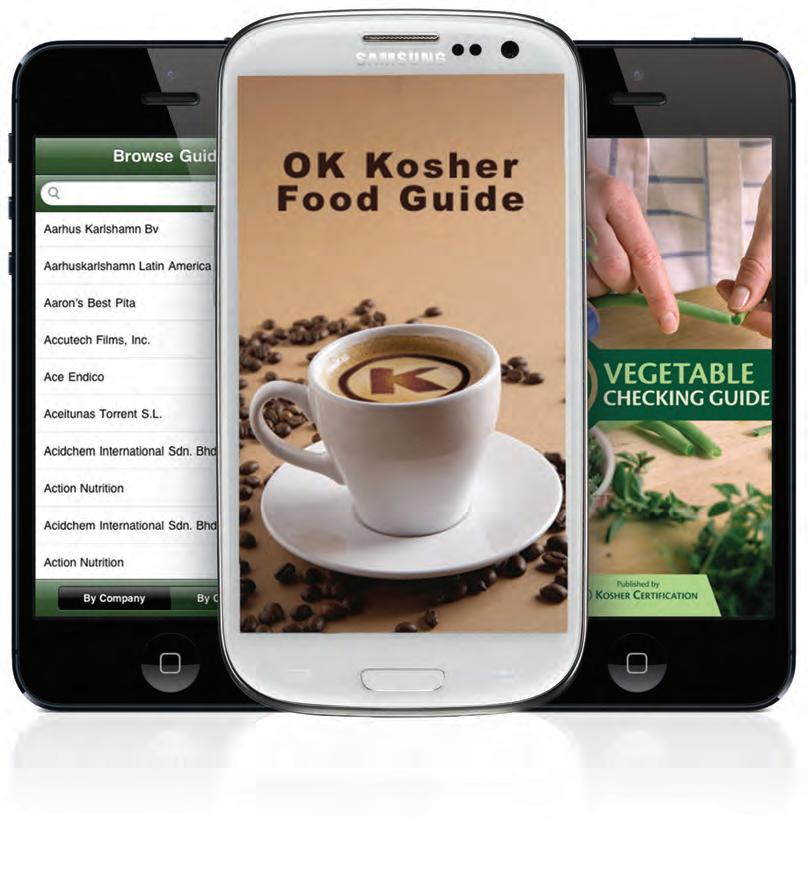



The most powerful Kosher tools... now in the palm of your hand. FORAVAILABLE iOS ANDROIDAND DEVICES! DOWNLOAD FREE APPS! KOSHER CERTIFICATION ~ Kosher Spirit, 391 Troy Avenue • Brooklyn, NY 11213 718-756-7500 • info@ok.org • www.ok.org The ~ Kosher Food Guide provides the most up to date database of products certified kosher by ~ Kosher Certification. Search by company or by category and have the latest info at your fingertips. follow us on Twitter @KosherAlerts For the latest in Kosher news: follow us on Facebook facebook.com/okkosher 2 cutting-edge Kosher Apps now available as a free download on Google Play or the App Store





 Sara Chana Silverstein
Sara Chana Silverstein








 BY LEIGH HERSHKOVICH
BY LEIGH HERSHKOVICH

 By Rabbi YitzchakGornish
By Rabbi YitzchakGornish











































































